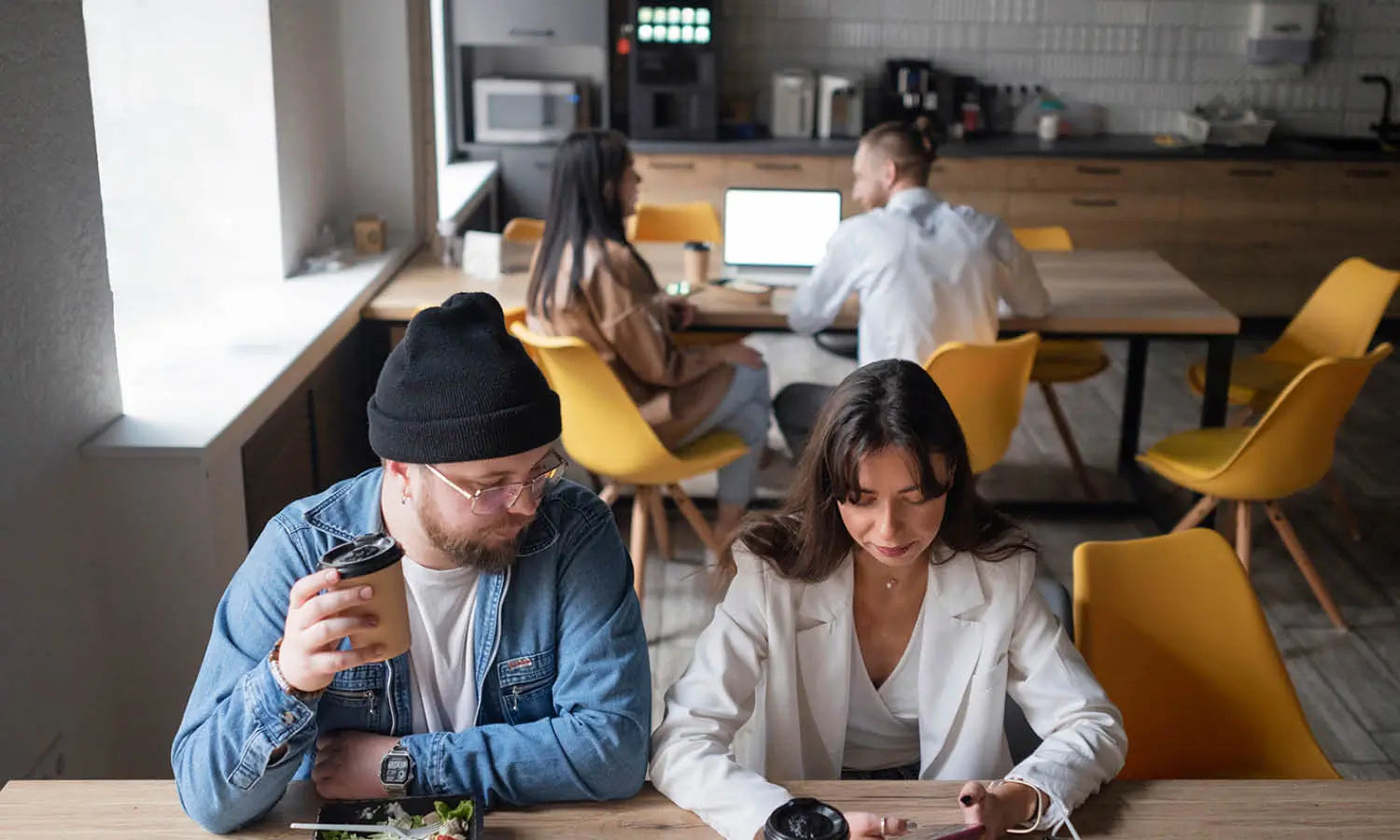How To Check If Someone Copied Your Logo Design

A logo is not just a part of your brand identity; it encapsulates your business's values, mission, and visual appeal. Protecting this integral element of your brand from being copied or mimicked is crucial for maintaining its uniqueness and value. Whether you're a small business owner, a freelance designer, or part of a large corporate entity, understanding how to check if someone has copied your logo design is fundamental in safeguarding your creative work.
The digital era has simplified the process of creating and sharing designs, but this accessibility also brings the risk of your unique logo design being replicated without permission. This article provides practical steps and strategies to effectively monitor and identify potential infringements of your logo design. By staying vigilant and informed, you can ensure that your logo continues to stand out and represent your brand without compromise. Join us as we explore comprehensive methods to protect the integrity of your logo design, ensuring that it remains distinct and legally yours.
Use Reverse Image Search Engines
In the quest to protect your logo design, reverse image search engines are invaluable tools that offer an immediate method for identifying potential copies of your logo across the internet. Platforms like Google Images allow you to upload an image of your logo and search for visually similar graphics. Lenso.ai can also help you find exact duplicates of the image you sent, so you’ll be able to quickly identify any potential copyright misuse. This technology scans through billions of images to find matches or near-matches, enabling you to quickly spot any unauthorized use of your logo design.
When using reverse image search, it’s crucial to check regularly, as new content is constantly being uploaded online. This can be part of your routine brand monitoring strategy, ensuring that your logo remains unique and protected. Additionally, consider using other reverse image platforms such as TinEye or Bing Image Search, which might provide different results based on their specific algorithms and databases.
By leveraging these tools, you can not only detect direct copies but also track where your logo is being used, how it’s being used, and whether those uses respect your brand's intellectual property rights. This proactive approach in monitoring can serve as a first line of defense in maintaining the integrity and exclusivity of your logo design.
Check Popular Logo Databases
For any designer or brand manager, popular logo databases are essential resources for ensuring the originality and uniqueness of your logo design. Websites like Logopond, LogoLounge, and Brand New showcase a wide array of logos from around the world, providing a platform where designers can gain inspiration and check if their creations are genuinely unique.
These databases are curated with high-quality, professional logo designs and are frequently visited by industry professionals. By regularly browsing these sites, you can see if there are any new logos that closely resemble yours. This is particularly useful during the initial design process to avoid unintentional similarities with existing logos. These databases can serve as a reference point for understanding current trends in logo design within your industry. Staying informed about these trends can help you create a logo that is both modern and distinctive.
If you suspect that your logo has been copied, documenting logos from these databases can support any legal claims by establishing that your design was indeed original and published before any similar designs. Incorporating regular checks of these popular logo databases into your brand monitoring strategy can significantly aid in protecting the uniqueness of your logo design, ensuring it stands out in the crowded marketplace.
Monitor Competitor Brands
Keeping an eye on competitor brands is a proactive strategy to ensure that your logo design remains unique within your market niche. As businesses evolve, so do their branding and visual identities, which might lead to similarities or overlaps in logo designs. Monitoring your competitors not only helps in identifying possible imitation but also provides insights into branding trends and shifts within your industry.
To effectively monitor competitor brands, set up alerts using tools like Google Alerts for keywords related to your competitors. Additionally, follow their official social media profiles, subscribe to their newsletters, and regularly visit their websites. This constant vigilance allows you to see any updates or changes to their logos and branding materials in real time.
Consider also attending industry events and trade shows where competitors might showcase their branding. Such occasions offer a firsthand look at their marketing materials and any new logos they might introduce. Keeping detailed records of these observations can be useful, particularly if you need to address potential conflicts or seek legal counsel regarding logo similarities.

Utilize Copyright and Trademark Databases
To safeguard the uniqueness of your logo design, utilizing copyright and trademark databases is a crucial step. These databases, managed by governmental bodies such as the United States Patent and Trademark Office (USPTO) or the Intellectual Property Office (IPO) in the UK, allow you to search through registered trademarks and copyrighted logos to ensure your design doesn't infringe on existing rights and to secure your own legal protections.
When you access these databases, you can conduct a thorough search for logos that are visually similar to yours. This is particularly important before finalizing your logo to avoid legal disputes over trademark infringement. If your logo is original, registering it as a trademark in relevant categories will provide you with legal grounds to protect your design against unauthorized use by others.
The process of searching and registering can be complex, so consider consulting with an intellectual property attorney who specializes in trademark law. They can assist in navigating the search databases, interpreting the search results, and advising on the likelihood of successful trademark registration.
Regularly revisiting these databases as part of your ongoing brand management strategy will also help you keep track of new registrations that might be too similar to your logo, ensuring your logo design remains protected as your brand grows and evolves.
Employ Professional Monitoring Services
To ensure comprehensive protection for your logo design, consider employing professional monitoring services. These services specialize in tracking how and where your logo is being used across various platforms, including online and in print media. By enlisting experts who use advanced tools and technologies, you can have peace of mind knowing that any potential infringement will be identified swiftly.
Professional monitoring services offer a range of benefits. They conduct regular scans of the internet, including websites, social media, and online marketplaces, to detect unauthorized use of your logo. These services can also monitor for trademark filings globally, alerting you to new applications that might be too similar to your design.
Moreover, these services often provide detailed reports and analytics, which can help you understand the reach and impact of your logo design. This is invaluable for making informed decisions about brand strategy and enforcement actions. If infringement is detected, these services can also guide you through the process of enforcing your rights, including sending cease and desist letters or negotiating settlements on your behalf.
Analyze Design Trends in Your Industry
Keeping abreast of design trends within your industry is essential for maintaining a relevant and distinctive logo design. Analyzing these trends not only inspires creativity but also helps you gauge how your logo stands compared to emerging styles and motifs. This awareness can prevent your brand from appearing outdated and can guide you in making informed decisions should you choose to update or redesign your logo.
To effectively analyze current design trends, regularly review industry-specific publications, follow leading design blogs, and participate in design forums and workshops. Attending industry conferences and exhibitions is also beneficial, as they provide insights into the future direction of design aesthetics and innovations.
Additionally, leveraging tools like Pinterest or design-centric platforms like Behance can offer a visual snapshot of what is trending across different sectors. By understanding these trends, you can ensure that your logo design not only resonates with current tastes but also retains a timeless quality that transcends fleeting fads.
Seek Feedback from Your Network
Leveraging your professional and personal networks is a valuable strategy to ensure your logo design remains original and effective. Seeking feedback from fellow designers, industry peers, and trusted colleagues can provide you with diverse perspectives that help refine and validate your logo’s design. This collective insight can be instrumental in identifying any unintentional similarities with existing logos or spotting potential areas of improvement that you might have overlooked.
Start by presenting your logo in various contexts and mediums to your network to gauge its versatility and impact. Ask specific questions about the design’s originality, relevance, and alignment with your brand values. Encourage honest critiques and be open to constructive criticism, as this can lead to significant improvements in your logo design.
Additionally, utilize professional platforms like LinkedIn to reach a wider audience and gather feedback. Engaging in design communities such as Dribbble or Behance can also provide valuable insights from professionals who specialize in logo design and branding.

Use Social Media Searches
Social media platforms are powerful tools for monitoring how your logo design is perceived and used across different channels. Regularly searching these platforms can help you identify unauthorized uses of your logo and gauge public perception and popularity of your design.
Use the search functions on platforms like Facebook, Twitter, Instagram, and Pinterest to track mentions and visual representations of your logo. This can include searching for hashtags, keywords, and even direct mentions of your brand. Social media monitoring tools like Hootsuite or Brandwatch can automate this process, providing real-time alerts and comprehensive analytics on your logo’s usage and engagement.
Exploring these social insights allows you to see how your logo performs in real-world applications, from digital marketing campaigns to customer-shared content. It can also alert you to any misrepresentations or copyright infringements of your logo design.
Furthermore, social media searches can reveal trends and consumer behaviors related to your brand and industry, offering opportunities to align your logo more closely with your target audience’s expectations and preferences. This proactive approach not only protects your logo but also enhances its strategic deployment across marketing channels, ensuring it continues to serve as a strong and adaptable emblem for your brand.
Attend Industry Conferences and Expos
Attending industry conferences and expos is a proactive way to stay ahead in the evolving field of logo design. These events provide unparalleled opportunities to observe current trends, network with other professionals, and identify potential cases where your logo design may be inadvertently replicated. At these gatherings, businesses often showcase their branding prominently, giving you a chance to see a variety of logo designs in one place.
To make the most of these events, plan to visit booths and presentations where companies from your sector and related fields display their branding materials. Take note of any logos that resemble yours, and consider the context in which they are used—this can be crucial for understanding industry trends and potential overlaps.
Additionally, many conferences feature sessions on brand protection and intellectual property rights that can be extremely beneficial for logo designers. Participating in these discussions can also lead to insights on how to better safeguard your designs from being copied.
Educate Yourself on Copyright Laws
Understanding copyright laws is essential for any designer looking to protect their logo design. Education in this area will equip you with the knowledge needed to safeguard your creative works legally and effectively. Knowing the basics of copyright, trademark registration, and intellectual property rights can help you navigate the complexities of the legal landscape surrounding logo design.
Begin by researching the copyright laws that apply in your country, as these can vary significantly between jurisdictions. In many places, copyright protection is automatic upon the creation of a design, but registering your logo as a trademark can offer additional security. This registration process typically involves proving the uniqueness of your logo and its association with your brand.
Consider attending workshops or seminars focused on copyright and intellectual property specifically for designers. Many professional associations and legal firms offer resources and sessions that can deepen your understanding of how to protect your designs legally.
By equipping yourself with this legal knowledge, you not only protect your own work but also ensure that you respect the intellectual property of others, maintaining ethical standards within the creative community.
Conclusion
Vigilance and proactive measures are essential in protecting the integrity of your logo design. From utilizing reverse image searches and monitoring competitor brands to attending industry events and educating yourself on copyright laws, each strategy plays a crucial role in safeguarding your logo. Regularly engaging with these practices ensures that your logo remains distinctive and legally protected, reinforcing your brand's identity in a competitive market. Embrace these methodologies to maintain the originality and effectiveness of your logo design, ensuring it continues to be a true representation of your brand.
Let Us Know What You Think!
Every information you read here are written and curated by Kreafolk's team, carefully pieced together with our creative community in mind. Did you enjoy our contents? Leave a comment below and share your thoughts. Cheers to more creative articles and inspirations!
















Leave a Comment